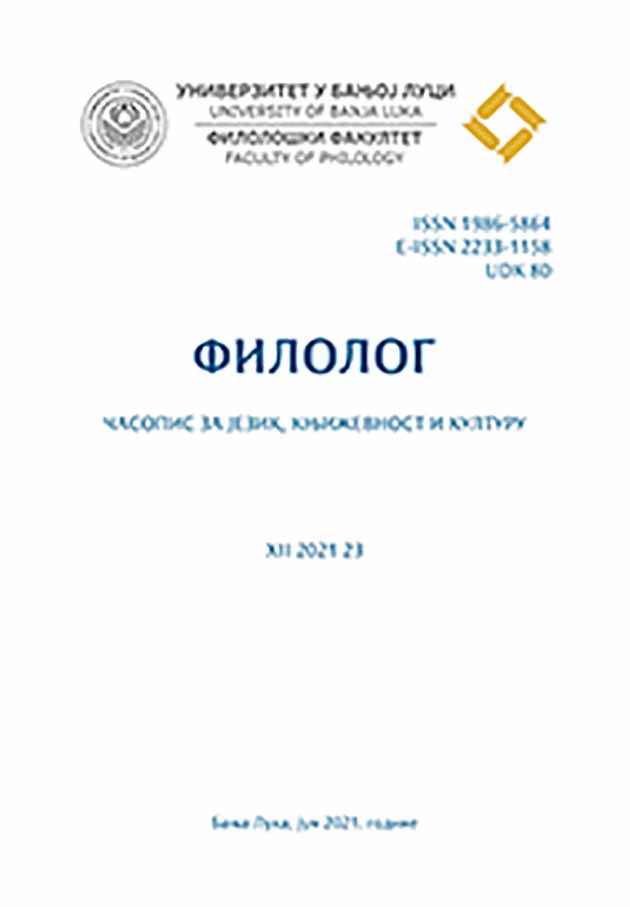
Putovanje kroz francusko kulturno nasleđe
Review of: Vučelj, Nermin (2020), Francuska kultura: jezik, društvo i duhovnost kroz epohe.Knjiga I ‒ od romanizovane Galije do renesansne Francuske, Niš: Izdavački centar Filozofskog fakulteta.
More...We kindly inform you that, as long as the subject affiliation of our 300.000+ articles is in progress, you might get unsufficient or no results on your third level or second level search. In this case, please broaden your search criteria.

Review of: Vučelj, Nermin (2020), Francuska kultura: jezik, društvo i duhovnost kroz epohe.Knjiga I ‒ od romanizovane Galije do renesansne Francuske, Niš: Izdavački centar Filozofskog fakulteta.
More...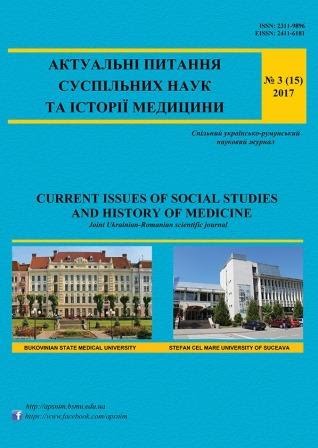
У праці Арнольда Ван Геннепа «Les rites de passage» здійснено типологію обрядів. Весільні обряди впливають на зміну статусу, формування особистостей молодих людей, інтегрування їх у більш чисельну громаду села. У статті висвітлено особливості проведення весільних обрядів в Олтенії в порівнянні з іншими румунськими регіонами. Етапи весілля дуже багаті на символічні особливості, крім того, можна виділити численні обряди, що стосуються неодруженої молоді, обмежувальні обряди або обряди агрегації. Теорія Арнольда Ван Геннепа може і надалі допомагати здійснювати нові етнологічні дослідження.
More...
As a product of the North African region, Maghrebian literary phenomenon combines specific features of three cultures – Arab, Berber and French and today has a special place in the world literature. The purpose of the proposed article is to demonstrate how the colonization of the Maghreb, the expansion of the French culture, the policy of assimilation and acculturation, a resistance movement of the colonized peoples led to the literary bilingualism of Algeria, Tunisia, Morocco that intensified the literary process in the region in a specific way. The novelty of the article consists in the fact that it reflects the deep connection between the Maghreb Francophone literature and the historical and cultural context. The Maghrebian francophone literature was constituted as early as in the 50s of the last century, but only in the 60s, thanks to the works of A. Memmi and A. Katibi was recognized as a separate area in the world literature. Research methods are a complex of comparative and historicalliterary approaches, The fundamental relationship between the Maghrebian francophone literature and historical and cultural context distinguishes it from the mass of the so-called colonial literature. Conclusions. The Maghrebian francophone writers covering the issues of identity and nationality, revival of identity and rebellion, loss of identity and exile, as well as women’s emancipation, determine the specificity of this literary movement. The most famous representatives of the Maghrebian francophone literature are A. Djebar, M. Dib, A. Memmi, M. Feraun, K. Yasin etc. The creative work of these writers identified a new type of literature: d’expression française, nationally specific to each of these countries. This article researches the migrants’ problems and the search for identity in the context of Franco-Maghrebian literary phenomenon of the works of two French-speaking Algerian writers and A.Djebar and L.Sebbar.
More...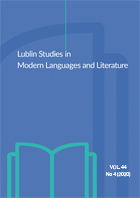
This article focuses on issues concerning Central Africa as depicted in the essay by Le Clézio L’Africain (2004). The geocritical approach to the story told in the piece, will allow us to consider the polisensorism present in the scriptural, and, at times, in the pictorial language by Le Clézio, as all the senses are important and present in his perception of the African landscape. We strive to study the impact of such understanding of space on the development of the subject and its relationship with the world. We also investigate whether this empirical knowledge shapes, to some extent, his ecological attitudes.
More...
In the 1980s, the Soviet Union still remained a closed country where the movement of international tourists was generally put under control. However, Olivier Rolin, a French writer whose works are inspired by his many travels, manages to cross alone this country of which he knew almost nothing. He relates this «poetic walk» (as he himself calls it) in his book In Russia published in 1987, which encompasses representations of spaces, landscapes and lifestyles throughout the USSR, including Soviet cities such as Moscow, Leningrad, Odessa, Yalta, Sochi, Batumi, Irkutsk and Khabarovsk. These representations are also significantly influenced by the mythification of Russia and the USSR, and by stereotypical images of the country. The aim of this article is to analyse the linguistic means of translating stereotypes and cultural references (Russian and European ones), some of which serve as an important support to the author seeking to master this otherness that opens to him, while others are deconstructed, for the most part, in front of reality.
More...
The Ghosts of the Louvre by Enki Bilal embodies an exhibition of this artist which took place in this same place. The author offers an unusual visit to the museum: he has chosen works from which he brings up so many ghosts. The artist juxtaposed the ghosts and the photographs taken and built a biography for each protagonist. Using geocriticism, we will answer the following questions : how does the author take over the museum to build multiple and heterogeneous parallel worlds? How does the museum become both a place of terror and of admiration ?
More...
Our current article talks about the geocritical analysis of the spaces of the anonymous city and the sea argued by the two Algerian authors: Mohamed Dib through his novel Cours sur la rive sauvage and Yasmina Khadra in L'Olympe des infortunes. These two writers highlight the binary dynamics of the anonymous city and the sea. The fusion of these two spaces creates mirages revealing the intermingling of their writings and their society. This textual hybridization reveals a harmful criticism of the metropolis and the era of globalization.
More...
If territorial fixity seems to be erected in absolute value in the text of Maryse Condé, the travel account of François-Xavier Freland invalidates the immutability of the spaces represented. Relying on the intellectual mechanics of “founding myths” of the empires of the time, Condé delegates characters who extol the virtues of territorial immobility, considering that Ségou and Toumbouctou are eternal. But the flow of time has brought several changes to the Malian space, namely a geopolitical crisis brought about by Libyan chaos and a pervasive jihadist threat.
More...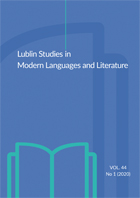
Our article is an analysis of the issue of translating emotions in literary texts on the basis of a corpus which consists of fragments from Maupassant’s fantastic tales translated into Romanian. By means of a comparison of the original with the translated published versions, where we apply methods specific to translation history and criticism, we follow and assess the implications of the translator’s different (subjective) strategies on the lexical and pragmatic level used in order to render the various degrees of fear in the target language.
More...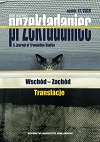
The article offers an analysis of Adam Ważyk’s translation work, particularly in the context of its influence on the shaping of contemporary Polish poetry. The author aims to showcase the impact of Ważyk’s translations on some of the recent developments within Polish literature; to this end, she employs the distinction between translatoras-envoy and translator-as-lawmaker, as proposed by Jerzy Jarniewicz. Ważyk is here seen as an example of a “lawmaker”, and compared to Piotr Sommer – another author influential within a similar audience. The author argues that in his original choice of what to translate, Ważyk was driven by a desire to project onto the Polish context - to reproduce in his native language – a set of poetic and social circumstances associated with the French avant-garde movement; finally it served the goal of making Ważyk’s own work more comprehensible to his Polish readers. At the turn of the 21st century a group of Polish poets who had expressed interest in Ważyk were also attracted to the work of poets translated by Ważyk; the influence of these foreign authors was thus mediated by Ważyk’s own work.
More...
In his essay L’effet de sourdine dans le style classique: Racine, Léo Spitzer analyzes attenuation mechanisms especially in connection with the face (gaze, eyes, mouth). How to approach the idea of face ? And how to use it in the analysis of classical theater’s language? We presume that the face systematically expresses deep emotions and is closely connected to the body and to this « bouillonnement intérieur » (inner excitement) that agitates the Racinian heroes by Racine’s tragedies.
More...
By placing ourselves in the theoretical paradigm which takes into account the sociological dimension of a translation which undermines the myth of an objective translation and a transparent translator, we sought to study the translator’s subjective, ideological and emotional interventions. The analysis of the translator’s traces, revealing a conscious manipulation which seeks to produce a persuasive effect or a more or less unconscious interpretation imbued with the translator’s own emotions will allow us to show the transformations that the pathemic expressions of the discourse (the emotional charge of the discourse, the ethos or the image that the author projects of himself, etc.) go through as well as the consequences on the level of the identity construction of the conflict’s protagonists.
More...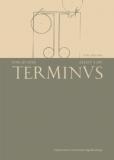
The aim of this paper is first of all to present graphic sources of Symbolica vitae Christi meditatio by Tomasz Treter in three 16th-century emblematic works from the French and Dutch circles, namely by Junius Hadrianus (Emblemata), Claude Paradin (Devises heroïques), and Aneau Barthélemy (Picta poesis). It also presents an analysis of the composition of Treter’s collection and situates it in the context of emblematic meditations, promoted by Jesuits in the 16th century. The following four emblems are analysed in detail: Nativitas, Manifestata veritas, Circumcisio, and Continentia. Th ey provide both a metacommentary on the role of image in cognition and an illustration of the relationship between pair of emblems throughout whole collection. The first hundred emblems in Treter’s collection are arranged in pairs, in which the first one shows an episode from the life of Christ, while the second one transposes the biblical story into a symbolic language. The quoted fragment of Jesus’ life is each time used to discuss a Christian virtue expressed through an abstract symbol. At the same time, the traditional tripartite construction of the emblem becomes less strict as in Treter’s collection emblems take the form of two icons sharing a single subscription.
More...
The purpose of this article is a study of the phenomenon of cultural intertextuality in French rococo on the ground of French prose literature of XVIII century. Methodology. In our research, we employ a method of cultural analysis developed by Annales school. The scientific novelty is determined by the research of non-translated work of Frenche literary rococo ―The Adventures of Telemachus‖ by François de Salignac de La Motte Fénélon of 1699 as phenomenon of French culture of XVIII century, and the study of cultural phenomenon of intertextuality, which is displayed in numerous suites (sequels) and pastiches-parodies of this novel. Conclusions: novel "Adeventures of Telemachus" makes a suite sequel to Homer‘s poem "Odyssey", play "Idoménée" by Prosper Jolyot de Crébillon makes a pastiche to novel "Adeventures of Telemachus", and P. Marivaux‘ novel "Télémaque travesti" makes a parody on François Fénélonùs novel. At the same time, F. Fénélon‘s novel and pastiches and parodies written on it create a metatext of French XVIII century rococo novel of journey.
More...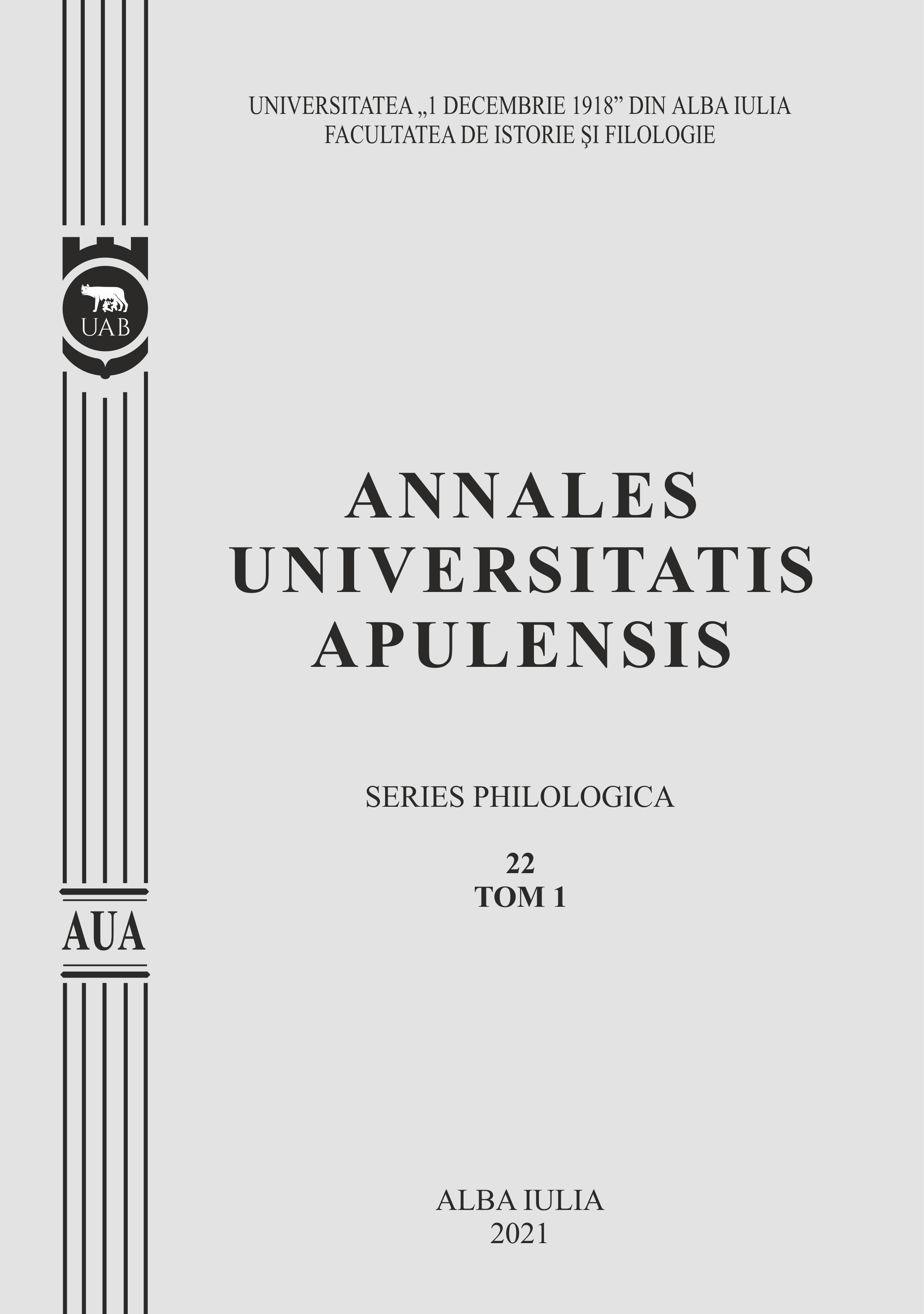
This article aims at revising a series of questions the autobiographical literature confronts us with when published during the lifetime both of the author and of real people having become fictional characters. We are thus referring to the context where real people, who shared some life experiences with a writer, are present in the pages the latter wrote. What is the limit? When are we dealing with an instrusion in somebody else’s life, with a violation of a right to a private life and to anonymity? To what ethics is an autobiographic literary project subject to, apart from the author’s honest wish of delivering the result of their creative effort? This question is being asked more and more frequently, and the cases of situations generating tensions, lawsuits or books withdrawal from the market are already well known.Annie Ernaux and Philippe Vilain lived a love story that each of them chose to transform into literature. Philippe Vilain comments, without major tensions and as a literary critic this relationship and the way his partner turned it into literature, especially since he agreed to the publishing of an article written by Ernaux, in which she refers to the experience they both lived. Showing how the crude transposition of reality can be the equivalent of an agression towards the other, the writer-critic raises the problem of the ethics that the autobiographical literature must comply with. We were interested by the different relationship Vilain has with his love story, according to the hat he is wearing. On one hand, as a writer, his attitude is full of affection and vulnerability and on the other, as a literary theorist, he is detached of the emotion of the experience. Moreover, he pays full attention to the change of perspective that can happen in time, to the consequences generated by the exposure and by the power relationship betweeen the two partners at the moment of the experience / publishing / falling apart.We are going to refer to the following novels: Vilain’s L’Etreinte and Ernaux’s L’Occupation, from the perspective of a problem exposed by the literary critic in his Défense de Narcisse – an open-heart surgery in which the objective and subjective reality meet in a tension that Vilain tries to appease, to understand and to expose as an analysis, also conceived as a wake-up call.
More...
Fitting into the current law and literature movement, the article focuses on the literary depiction of changes within divorce proceedings in nineteenth-century France based on Guy de Maupassant’s novel Bel-Ami. Written in 1885, the book depicts, in a highly realistic manner, fault-based divorce proceedings at the time of its creation. In the introduction, I briefly touch upon the evolution of the French divorce proceedings throughout the eighteenth and nineteenth centuries, and its final outcome: the legalisation of a dissolution of marriage in 1884. The article attempts to answer the question how that revolutionary change of the divorce law influenced the novel’s content and how Guy de Maupassant depicted the dissolution of marriage in his work, and to verify if this depiction reflects legal reality.
More...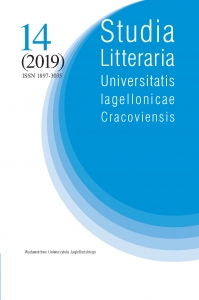
The article presents the function of reticence in Jean-Philippe Toussaint’s writing in the context of the return to the story in francophone literature, initiated in the 80s of the 20th c. Jean-Philippe Toussaint is a contemporary Belgian writer, photographer and film-maker. He has written twelve novels and short stories, as well as authored films and installations. Belonging to the generation of minimalist writers, Toussaint sets his use of reticence in the context of the tendency to return to Genette’s category of story (récit). Since the publication of his novel La Réticence (1991) reticence has become the key category of his écriture. In his books, it shapes the form, the narration and the plot, the construction of characters, temporality, and space. Thus, its function in Toussaint’s writing enables us to observe idiosyncratic aspects of his “infinitesimalist” texts which play with the canonical, realistic model of the novel.
More...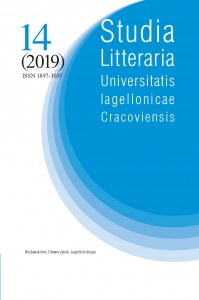
The aim of the article is to prove that the novel Reticence (1991) by Jean-Philippe Toussaint, Belgian writer, director and visual artist, is a parody of the detective novel’s sub-genres: the mystery novel and the suspens novel. These references to popular literature, however, are not aimed only at producing the comical catharsis effect. On the contrary, they constitute especially the way of the revival of Gérard Genette’s category of narrative discourse. The enigma, the suspens and the investigation, the predominant features of detective novels, shape the unique fictional universe, in which the author plays with his readers. Toussaint revives the novelistic genre on three levels: of the story, the narration and the narrative text. The mystery becomes the dominant element of the book, as well as a metaphor of the literary creation. In Reticence, Toussaint, as the omnipotent author, depicts his self-portrait to be able to discuss even better his own writing and the complex relations the book – the reader.
More...
The state as a Citadel of the spirit, led by a wise Ruler, is an idea that seems utopian after all the cruel social experiments of the 20th century. But the course of world history is not created in the offices of modern politicians. The milestones of the coming evolution are formed by the thought which is consonant with the divine Beauty, this idea is dedicated to one of the last works of Antoine de Saint-Exupéry – philosophical story-parable Citadel. The heights of the human spirit, which were the basis of the Citadel, were amazingly accordant with the ideas of the book Parting Words to the Leader, a little earlier created on the Himalayan heights.
More...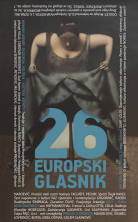
Dosada neobjavljeni prijevodi književnika, teatrologa i prevoditelja Zvonimira Mrkonjića našli su se u obimnoj i zanimljivoj knjizi neslučajnog naziva Slučajna antologija (Stajer Graf, 2020.). Kako je autor i prevoditelj smatrao da uvršteni autori ne trebaju biti popraćeni kratkim biografskim zapisom, otvaramo knjigu, pjesničku zbirku antologijskih pjesama svjetske moderne književnosti 20. st. (njemačke, francuske i američke), hrvatskoj javnosti dosada nepoznatih u hrvatskom prijevodu – s pozivom na istraživanje vremenskih i prostornih te poetičkih odrednica uvrštenih autora. Pri istraživanju, više su no dragocjeni Mrkonjićevi uvidi koji se također slučajno pojave kao uvodi u poetike nekih autora.
More...